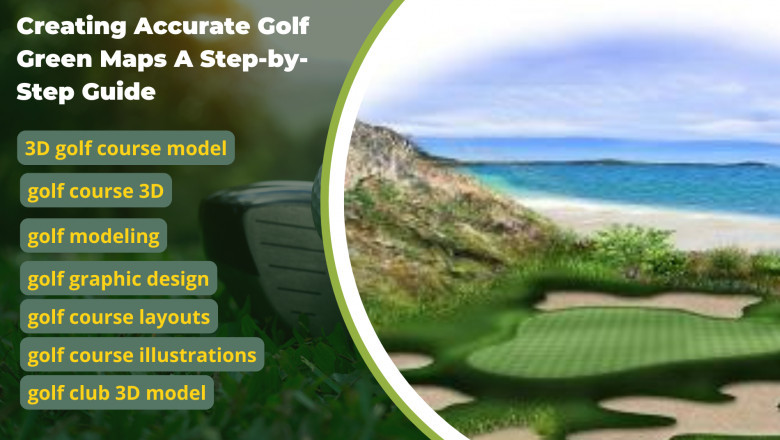views
Introduction
Creating high-quality 3D game assets requires a delicate balance between visual fidelity and real-time performance. Whether designing detailed characters, expansive 3D game environments, or intricate props, developers must optimize assets efficiently to ensure smooth gameplay across different platforms. In this blog, we will explore the best practices for 3D game asset optimization, covering aspects of 3D modeling games, 3D hard surface modeling, 3D vehicle modeling, and 3D environment modeling.
Understanding the Importance of Optimization
Optimization is crucial in 3D modeling games as it affects both performance and aesthetics. Overly detailed models with excessive polygons can slow down rendering, while overly simplified assets can degrade visual quality. The key is to find a middle ground where assets maintain high quality without sacrificing performance.
Key Challenges in Asset Optimization
- Polygon Count Management – Maintaining an optimal polygon count is essential for rendering efficiency.
- Texture Optimization – High-resolution textures can increase memory usage and impact performance.
- Level of Detail (LOD) Implementation – Using LODs helps adjust detail levels based on the player's distance.
- Efficient UV Mapping and Baking – Proper UV mapping ensures textures are used efficiently.
- Shader and Material Optimization – Reducing the complexity of shaders improves rendering speed.
- Asset Culling and Streaming – Implementing occlusion culling and streaming techniques helps manage resource load.
Best Practices for 3D Game Asset Optimization
1. Optimizing 3D Game Assets for Performance
When working with 3D game assets, it's essential to ensure they are lightweight yet visually appealing. Here are some techniques:
- Reduce Polygon Count Without Losing Detail: Use normal maps to maintain the illusion of high detail while keeping the geometry low-poly.
- Use Efficient Topology: Ensure clean topology for proper deformation and efficient shading.
- Bake High-Resolution Details: Convert high-poly details into normal maps to be applied to low-poly assets.
2. Efficient 3D Environment Modeling for Real-Time Rendering
A well-optimized 3D game environment enhances performance without compromising visual quality. Key techniques include:
- Modular Asset Creation: Design modular pieces that can be reused throughout the game world.
- Efficient Occlusion Culling: Hide unseen assets to reduce rendering load.
- Optimize Lighting and Shadows: Use baked lighting where possible to reduce real-time computational overhead.
- Use Texture Atlases: Consolidating multiple textures into a single atlas reduces draw calls and improves performance.
3. Hard Surface Modeling and Optimization
3D hard surface modeling is common in vehicles, weapons, and props. Optimizing these assets involves:
- Using Proper Edge Loops: Maintaining well-placed edge loops enhances shading and smoothness.
- Reducing Unnecessary Geometry: Any unseen or minor details can be represented using normal maps.
- LOD Implementation: Creating multiple levels of detail ensures better performance at different distances.
- Efficient UV Unwrapping: Minimizing texture seams and maximizing UV space utilization reduces texture memory consumption.
4. Optimizing 3D Vehicle Modeling for Games
Vehicles like cars, tanks, and aircraft require a balance between realism and performance. The best practices for car 3D model assets include:
- Using Normal and Ambient Occlusion Maps: Enhance surface details without adding unnecessary geometry.
- Streamlining Animation and Rigging: Optimized rigs ensure smooth animations without performance bottlenecks.
- Reducing Material Complexity: Combining multiple materials into a single texture atlas minimizes draw calls.
- Applying Correct Physics Colliders: Simple collision meshes improve in-game physics calculations.
5. Optimizing Props 3D Models for Game Performance
Props such as barrels, crates, and furniture populate 3D game environment. Proper optimization techniques include:
- Instance Reuse: Reusing identical props reduces memory usage.
- Decimating Unseen Faces: Removing unnecessary polygons that will never be visible optimizes performance.
- Using Shared Texture Maps: Consolidating multiple props onto a single texture map minimizes memory overhead.
Tools and Techniques for 3D Game Asset Optimization
Several tools assist in optimizing 3D game assets, including:
- Decimation Tools: Tools like ZBrush's Decimation Master or Blender's Decimate modifier help reduce polygon count efficiently.
- Texture Compression: Using formats like DDS or WebP helps maintain quality while reducing file sizes.
- LOD Generators: Software like Simplygon or Unity’s LOD system automates LOD creation.
- Profiler Tools: Unreal Engine and Unity provide profiling tools to analyze performance bottlenecks.
Conclusion
The art of optimizing 3D game assets is a continuous process of balancing detail with performance. By employing best practices such as LODs, efficient UV mapping, and texture optimization, game developers can create visually stunning 3D game environments while ensuring seamless gameplay. Whether it's 3D hard surface modeling, props 3D models, or 3D vehicle modeling, following optimization guidelines will enhance the gaming experience while keeping performance in check. By leveraging the right tools and techniques, developers can craft immersive and efficient 3D game environments that run smoothly across various platforms.






















Comments
0 comment